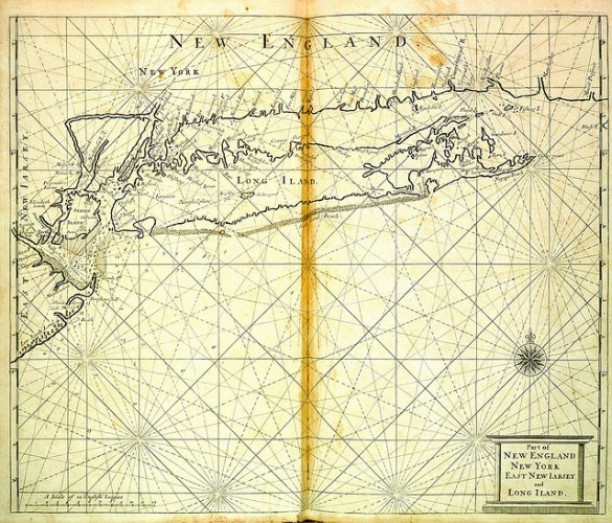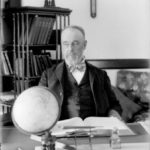
Part of New England, New York, East New Jersey and Long Iland (sic) by John Thornton and Richard Mount, 1698
– University of Connecticut Libraries’, Map and Geographic Information Center (MAGIC)
The Age of Discovery that began in 15th-century Europe sparked extensive world exploration and brought European travelers to what would become known as North America. The Dutch first explored the (now) New York and Connecticut regions, and the English soon followed. Puritan minister Thomas Hooker set off with a group of about 100 people from the Massachusetts Bay area and settled in what would become Hartford. As the Connecticut Colony evolved into a state, its residents themselves became ready explorers. For example, John Ledyard traveled the world and Hiram Bingam III discovered the city of Machu Picchu in Peru. State residents have also discovered (and uncovered) a wealth of knowledge and resources. Meteorologist William Redfield’s discovery of the directionality of hurricane winds and the unearthing of Eubrontes dinosaur prints in Rocky Hill are but two breakthroughs that have added to the scientific canon.
Featured
Goshen’s Asaph Hall Becomes an Astronomical Success
Credited with discovering the moons orbiting the planet Mars, Asaph Hall became an international science celebrity in the 19th century. …[more]





